Better late than never
Reluctantly I dragged my gaze away from the scenery outside and to my phone which had just alerted me to the fact that I had a new message. A cursory glance abruptly turned to full attention, for there on my screen was a picture of a blue stingray, Dasyatis chrysonota, with five short words “The first one to arrive.”
The picture had been taken that morning at Knysna Estuary on the south coast of South Africa, which is the only known, and documented, estuarine breeding aggregation site for blue stingrays in South Africa. We had been waiting six weeks for this message.
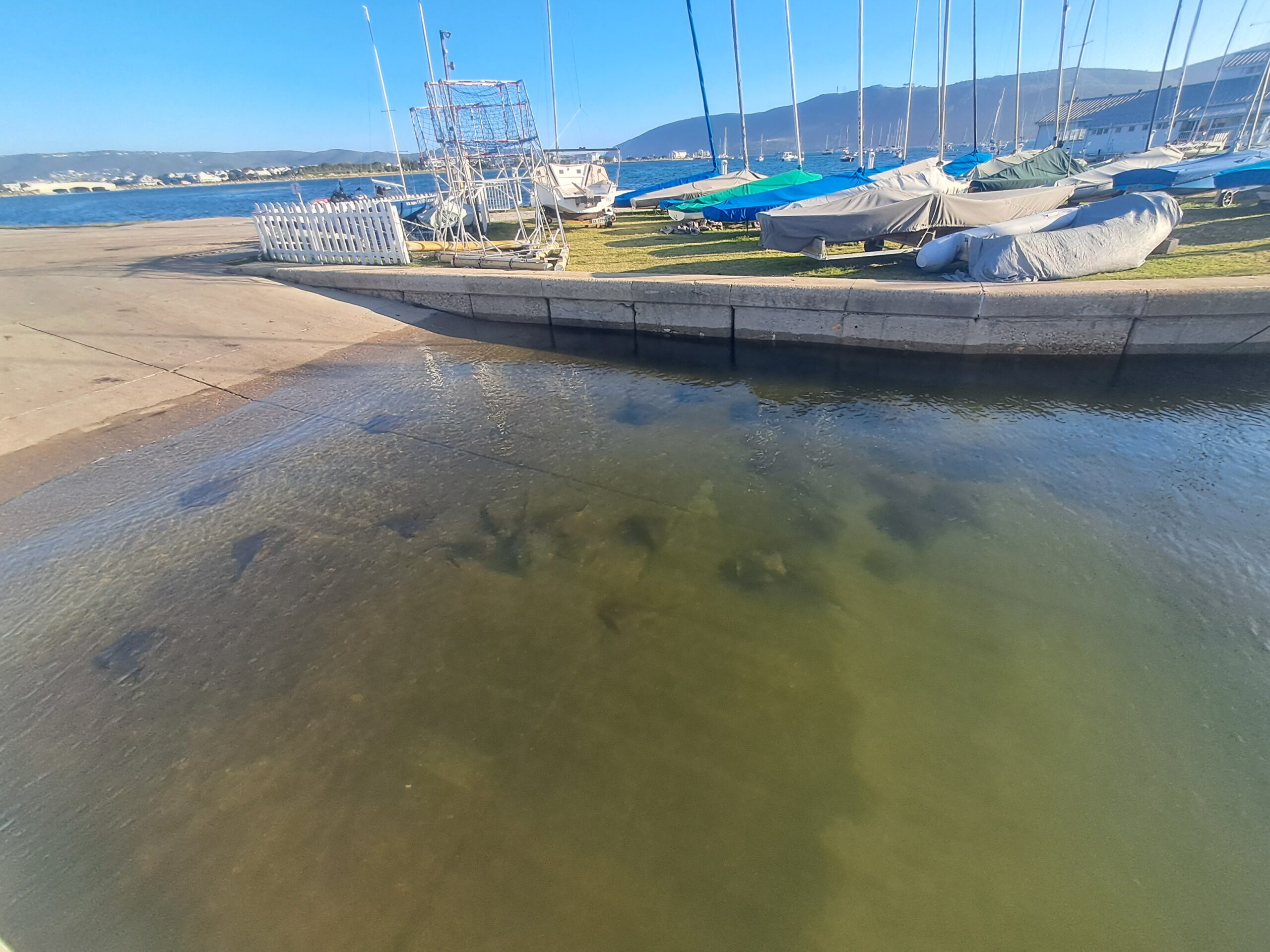
Blue stingrays aggregating in Knysna Estuary. Photo © Kyle Smith
Delight soon turned into concern as our team comprising researchers from Rhodes University, the South African Institute for Aquatic Biodiversity (SAIAB), South African National Parks and ORCA Foundation were scattered around the country and we only had a short window of opportunity to exploit. The rays usually arrive in October each year and disperse by the end of November. This past year, the rays only arrived mid-November and who knew how long they would stay. But it seems when you have a committed, enthusiastic, and passionate team, this is not a problem. A few days later, we were on site and assessing how to proceed.
Although this blue stingray aggregation has occurred annually for many years, very little is known about it, and in 2022 a project was initiated to provide insights into the aggregation including sex ratios, size distribution, and individual behaviour characteristics. With help from the Acoustic Tracking Array Platform (ATAP), we set up an estuary-wide acoustic receiver array and tagged 15 individual rays with internal acoustic telemetry tags to assess movement patterns, habitat utilisation, residency, and site fidelity.
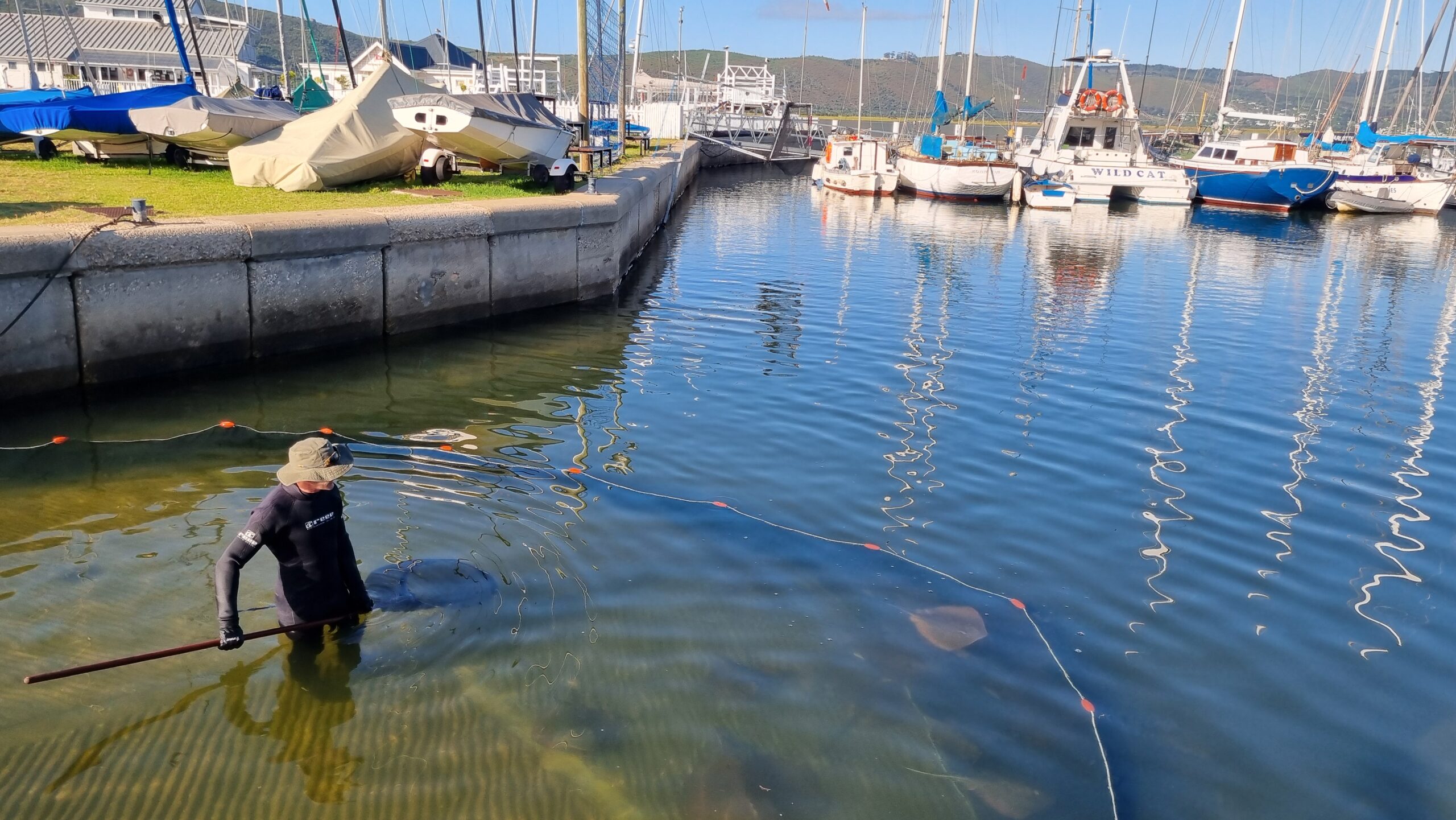
To minimise stress and disturbance each ray was carefully caught in a scoup net. Photo © Taryn Murray
In 2024, a second batch of 15 rays – a good mix of males and females – was tagged. The specific site within the Knysna Estuary where the rays aggregate had changed slightly over this two-year period, shifting from a bouldered stretch of the small boat harbour to pure cement slipway. As such, an adjustment to our capture methods was required. However, with an early start, and much eagerness, a routine was soon set, and all 15 blue stingrays were caught, tagged, and successfully released within one morning’s work, something almost entirely unheard of when it comes to setting up telemetry studies! Big smiles, high fives, and fist pumps all around.
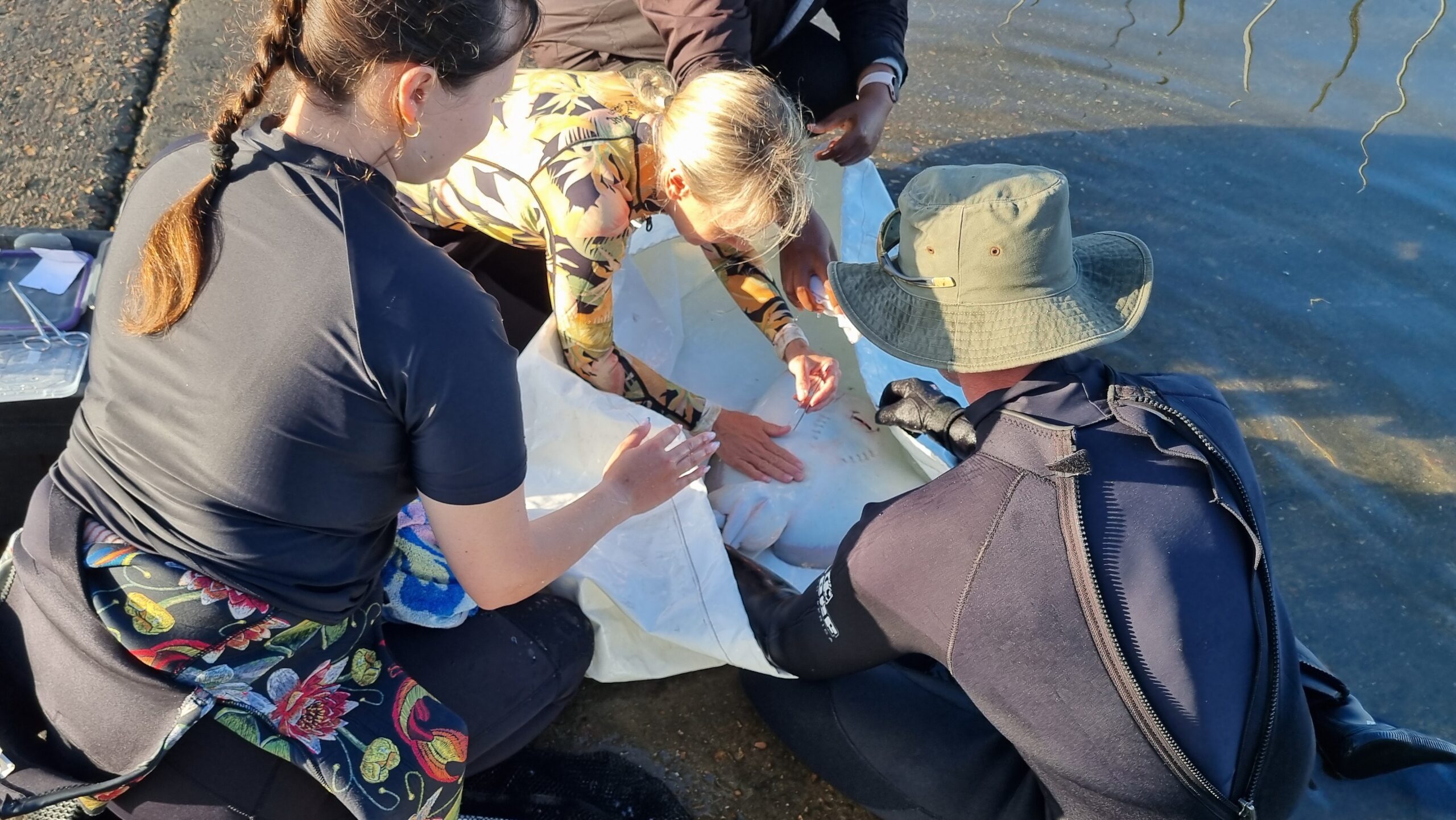
Professor Amber Childs tagging one of the blue stingrays with an internal acoustic tag. Photo © Taryn Murray
Blue stingrays have various colour patterns and markings and we had been wondering if it would be possible to use these to identify individuals. We were also keen to get a more precise size class distribution of rays forming the aggregation. With this in mind, we modified and trialled a stereo remote underwater video frame, which was partly successful but still led to some avoidance behaviour by the blue stingrays.
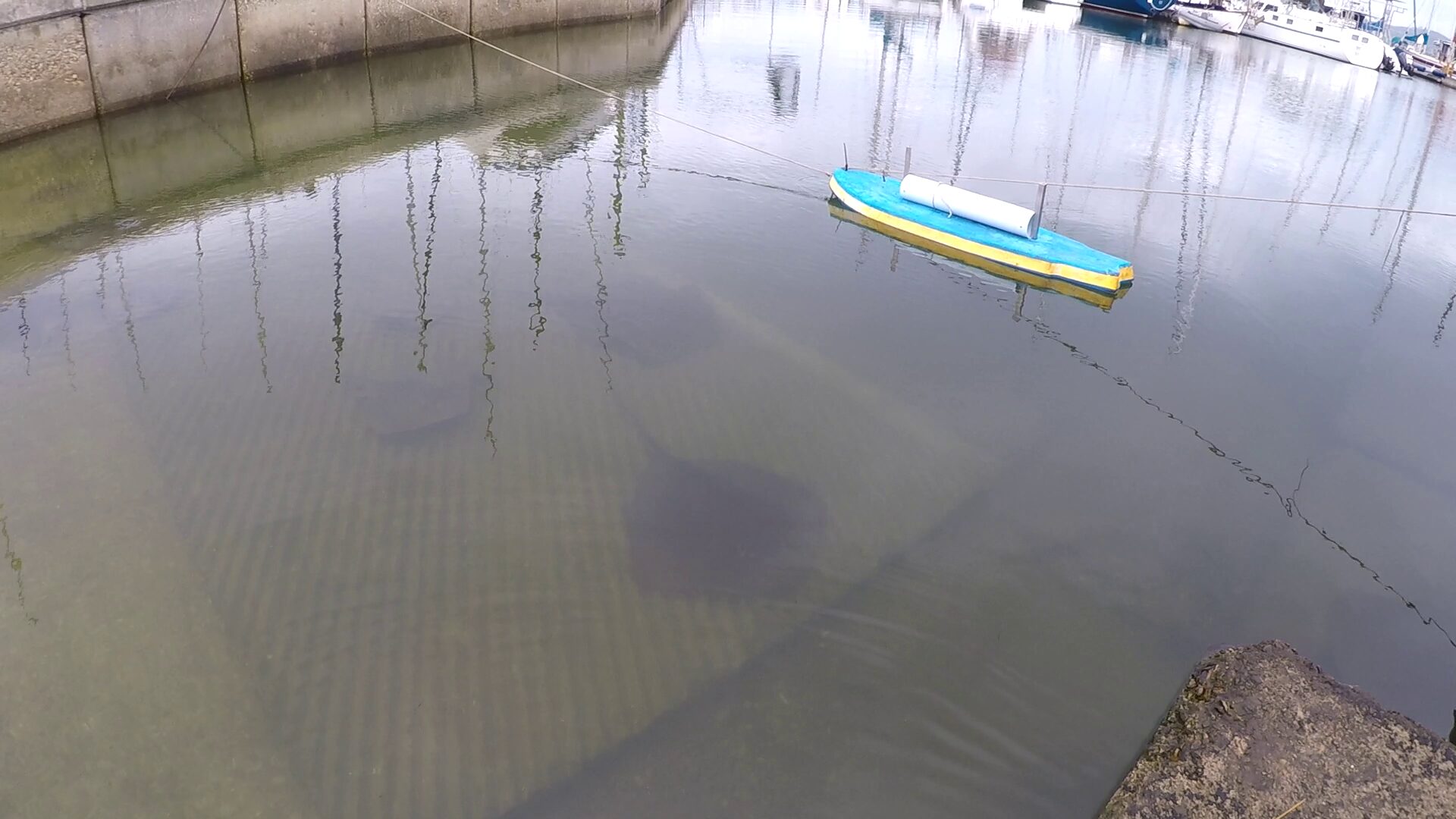
The modified stereo remote underwater video frame with rays showing some avoidance behaviour. Photo © Kyle Smith
Although we had started at sunrise as the morning progressed, our work attracted the attention of members of the public who were passing by. It was an opportunity to engage with stakeholders, share knowledge, and hopefully instil greater awareness and appreciation for our natural heritage. All people engaged with had one thing in common – how amazing they found the aggregation, and for those that already knew about it, a desire to conserve it.
After an aborted 2023 due to a stingray no-show, and with all our ATAP receivers retrieved, downloaded and redeployed, it was a great relief to accomplish our objectives in 2024. Now it’s up to the rays to reveal their secrets and slowly show us a year in the life of a blue stingray.
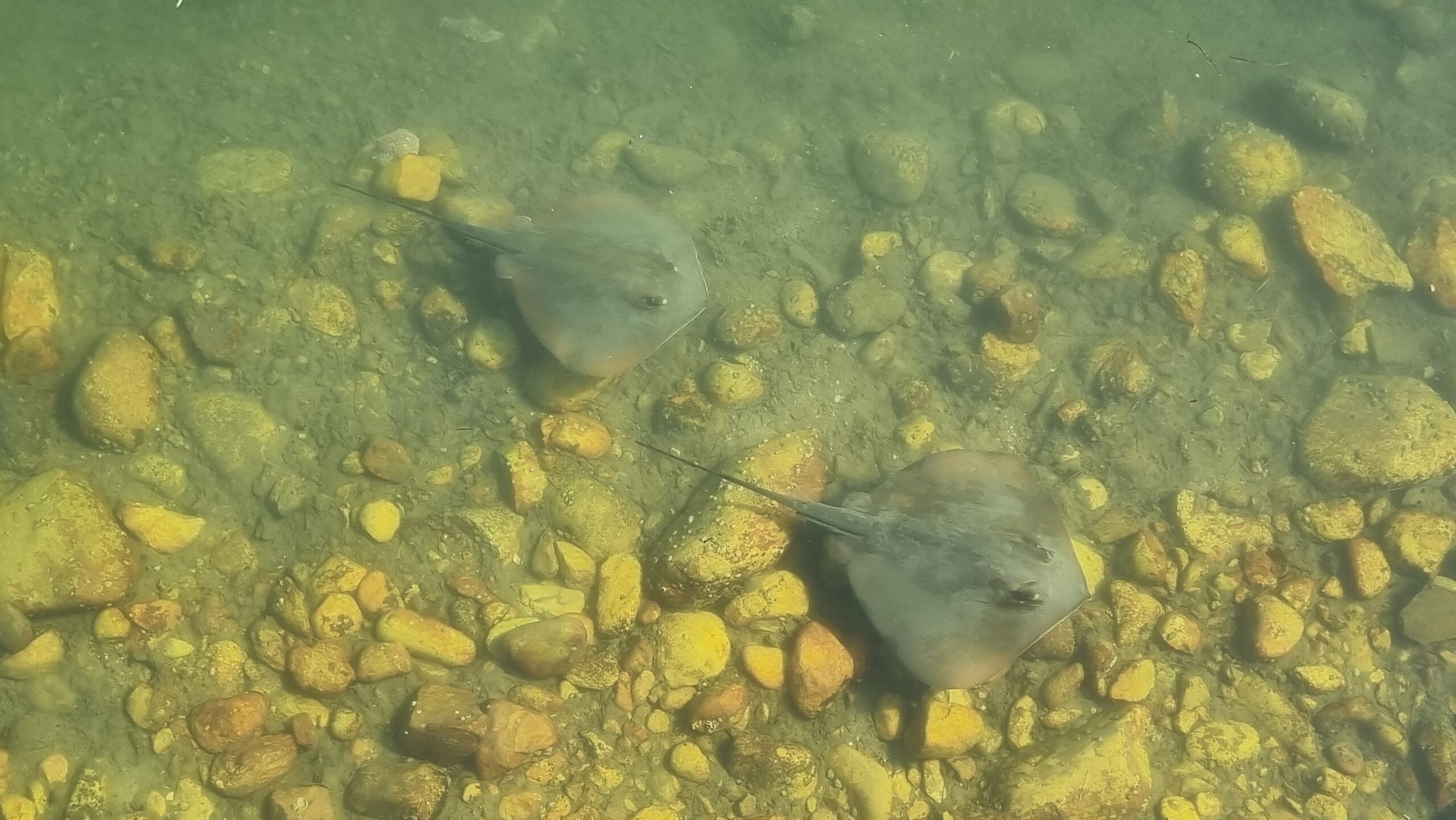
Blue Stingrays in Knysna Estuary. Photo © Taryn Murray
